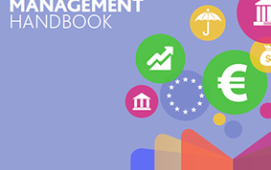News that Credit Suisse has been forced to suspend a group of traders in its structured credit trading division after “mis-markings and pricing errors” contributed towards another sizeable write-down serves as a further reminder – if one were needed – that ensuring accuracy and transparency in valuations of complex and hard to price instruments is absolutely paramount these days. For any financial institution having traders mark their own books is both hazardous and unacceptable from a transparency standpoint, and establishing valuations that are as accurate as possible is essential if clarity and stability are to return to the global financial picture.
We’ve noted in this column before that the sub-prime fallout and subsequent credit crunch are, if bad news for most of us, good news at least for providers of independent valuations services. And, boy, are there a lot of those these days – as the pages of this issue make plain. One observer suggests this month that there can “never be too many sources” of pricing as far as end users are concerned, and there is certainly no shortage of sources at the moment, as vendors big and small, broad-brush and niche in focus, singly and in collaboration, tout their capabilities to value all types of instrument under the sun, vanilla and bespoke.
The question is, how many sources can a particular financial institution afford? With spending coming under pressure in the current environment, there are likely to be limits even when it comes to essential services like independent valuations. So while choice is clearly a great thing and competition the best driver there is for pushing up quality of service, there is perhaps a danger with so many options available of confusion among potential buyers about what services will best meet their needs.
Should they go for a big, familiar data vendor that they know has provided high quality fixed income pricing in the past and is now extending its coverage to derivatives and structured products? Should they go for a niche vendor focused solely on the really complex and hard to price instrument types? Should they look for a big vendor that has partnered with a niche player? Do they need prices on truly bespoke instruments, and if so are they confident in their vendor’s capability to model and accurately value new instrument types? And, of course, how many independent sources do they need, and can they no longer use dealer prices or prices from their own trading desks at all – or are such sources acceptable as long as a back-up source can be used for validation?
The vast and growing range of product types that need to be valued is one challenging factor here – which vendor is best at valuing which type of instrument, and how close can one vendor come to complete coverage of a given client’s portfolio? – and another is the continuing propensity for certain models and certain data sources to be favoured in some quarters and others in others. An important feature to look for is how much supporting data a vendor can provide around the price itself – though increasingly they all say they can do this, which means its value as an obvious differentiator is diminishing.
So while the good news is there are lots of available sources, that’s also sort of the bad news for now, at least until greater standardisation of approaches occurs, and of course calm is returned to the situation as the current crisis (we hope) abates somewhat. There will however still be the ongoing challenge that the very nature of complex product trading at the sharper edge is dependent on the non-standard, which means that the idea of imposing consensus is a fundamental contradiction. A challenge indeed.
Subscribe to our newsletter




